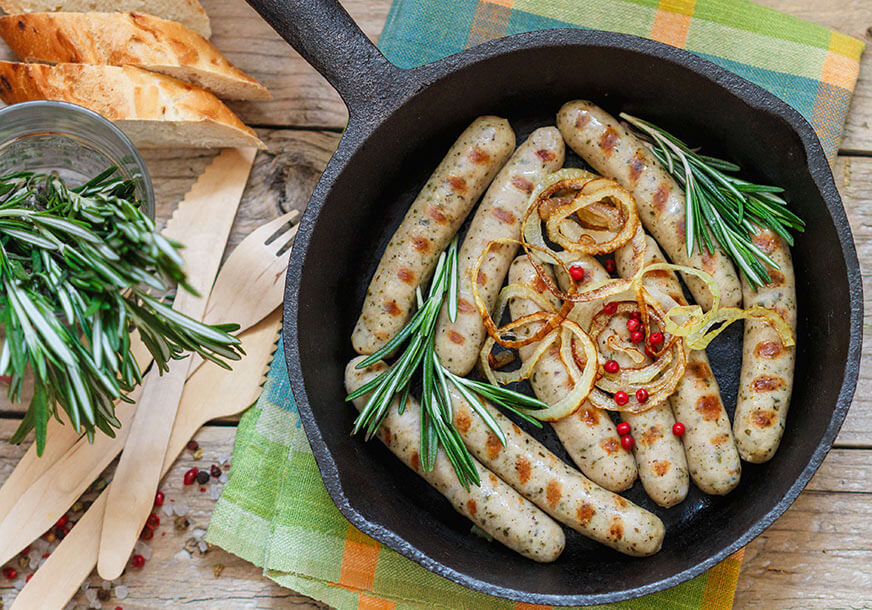How To Season A Cast-Iron Skillet

So you’ve taken the plunge and invested in a cast-iron skillet. As exciting as it is, it won’t be nonstick right away. In order to get your skillet in tip-top shape, you’ll have to season it and clean it properly. Here are some tips to get that skillet ready for your next culinary academy project:
How does a cast-iron skillet work?
Unlike Teflon and other nonstick-type pans, cast-iron skillets and pans aren’t made of anything but iron – which explains why they’re so heavy! Iron isn’t naturally nonstick, so a process of seasoning is necessary. By applying oil to the pan and baking it, the iron will absorb these nonstick materials and eventually, nothing will stick to the skillet as well. Sometimes it takes a couple rounds of seasoning to really get the oil to soak in.
The seasoning process
The Kitchn laid out a quick and simple method of getting your cast-iron skillet ready to use:
- Upon getting your skillet home, wash it with warm water and dish soap and preheat your oven to 325 degrees Fahrenheit. Designate a specific sponge, towel or dish brush to clean just the skillet.
- Thoroughly dry the skillet.
- Choose your favorite oil to apply to the skillet. Shortening and vegetable oil are common choices. Apply a coat of oil to the skillet with a paper towel – not too thick, but make sure the entire surface of the pan is covered. This will keep your pan from rusting.
- Place a sheet of foil beneath your oven’s rack so oil drips don’t get onto your oven, and place the skillet upside down on the rack. Bake the skillet for an hour.
Once your skillet has a shiny black surface and none of your food sticks to it, it’s completely seasoned.However, seasoning doesn’t last forever. Depending on how much you use it, you may have to re-season it every once in a while. If the coating begins to look dull, your food begins to taste metallic or food starts sticking to the pan, start the process over again.
Cooking with your skillet
When you’re cooking with your skillet, apply a thin coat of oil to the pan and let the pan slowly preheat before putting any food on it. Every time you cook a steak, burger or anything else with high fat content, you’re adding a little bit more seasoning and making the pan even more effective. Just don’t marinate anything in the pan.
Cleaning your skillet
Cast-iron pans are relatively low-maintenance. However, you should never put one in the dishwasher or use soap on it after it’s been seasoned. After you use your skillet, get every little bit of food off. Wipe it down with your brush, sponge or towel that you use specifically for it. If there’s food crusted on, sprinkle some kosher salt on the pan and scrub the food off. Avoid using water unless the food is really stuck on there.


